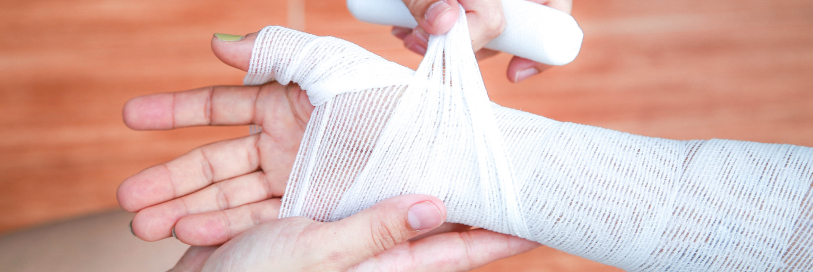Burn Injury Lawyer in Columbia, SC

Burn injuries can be excruciating, challenging to treat, and have a lasting impact on a victim’s life. Severe burns often require extensive medical treatment, and even when they heal, they can leave victims with permanent scarring or disfigurement. These injuries can significantly change a victim’s life and impact their ability to work or enjoy the daily activities as they once did.
If you have recently suffered burn injuries due to a third party’s actions or inactions, you deserve justice and fair compensation. A Columbia burn injury lawyer from the Law Offices of S. Chris Davis is ready to stand up for you if you have suffered burns and are in a position to hold a third party accountable for your harm. Contact us by phone or online for a free initial consultation today to learn about your rights and options under the law, as well as our firm’s approach to client-focused legal representation.
Types and Degrees of Burn Injuries
Burns vary in degree. Degrees specify how deeply the skin has been injured. By contrast, a “burn type” typically refers to how the burns occurred. Degrees and common types of burn injuries include:
- First-degree burns – This is the least severe degree of burn, only affecting the outermost layer of skin, also known as the epidermis. First-degree burns can cause redness and pain, but they usually heal on their own without any significant treatment.
- Second-degree burns – A second-degree burn affects both the epidermis and the layer of skin underneath, called the dermis. These burn injuries can cause the skin to turn red, white, or splotchy and often cause swelling and blistering. In some cases, second-degree burns can result in permanent scarring. Treatment may include wound dressings and burn creams or ointment.
- Third-degree burns – The most severe degree of burn, third-degree burns extend below the skin to the fat layer and/or other internal tissues. Affected areas can turn black, brown, or white, and the skin may take on a leathery appearance. These injuries also destroy nerve cells in the skin. Treatment may include water-based therapies to clean dead tissue or skin grafts to replace areas that are too damaged to heal on their own.
- Thermal burns – Thermal burns are caused by exposure to a heat source, such as an open fire or a hot stove.
- Electrical burns – Electrocution can also cause burn injuries, including (but not limited to) the point of contact.
- Friction burns – Rubbing the skin against a rough surface can cause abrasion injuries, sometimes called “road rash.”
- Chemical burns – Caustic or acidic chemicals can cause burn injuries to exposed skin.
- Radiation burns – Exposure to sources of radiation can also burn the skin. The most common example of a radiation burn is a sunburn caused by UV radiation. However, radiation burns can also be caused by unshielded exposure to radioactive materials or nuclear reactions.
What to Expect from Burn Injury Recovery
What treating and recovering from a burn injury practically entails will depend on the severity of the damage done. Most minor burns can be treated at home with first aid and heal on their own within a few days to a few weeks. However, more severe burns will usually require treatment from a medical professional.
Treatment for second-degree and third-degree burns may include frequent wound dressings, medications, surgery, and physical therapy. These treatments are intended to remove dead tissue, promote healing, prevent infections, and maintain function in affected areas of the body.
Examples of medical treatments for burn injuries include:
- Water-based treatments to clean dead tissue from burn wounds and stimulate healing
- Burn creams and ointments, which help keep affected skin moisturized and prevent infections
- Antibiotics to prevent infection
- Pain medications
- IV fluids to prevent dehydration
- Surgical procedures, including skin grafts to replace tissues that have been too badly damaged or plastic surgery to help improve scarring or to restore flexibility and function to affected areas of the body
- Physical or occupational therapy intended to keep healing skin flexible and to maintain or improve muscle strength and coordination; occupational therapy can also help you adapt to daily activities if your injuries have resulted in long-term impairments
Not only can serious burn injuries result in permanent disability, they may also result in long-lasting impacts on mental health due to physical disability or permanent scarring and disfigurement.
Some severe burn injury victims develop post-traumatic stress disorder (PTSD) or anxiety and depression. Group therapy, one-on-one talk therapy with a mental health specialist, or anti-anxiety or antidepressant medications can help with the emotional trauma caused by a burn injury.
What Compensation Could You Recover for a Burn Injury?
If you’ve suffered burn injuries, you might be able to pursue financial compensation for monetary losses, such as the cost of treating your injuries, as well as personal losses, such as emotional distress related to the accident or injuries. You might be eligible to recover compensation for:
- Costs of medical treatment and rehabilitation, including hospital care, surgeries and other medical procedures, medications, doctor’s appointments, and physical therapy
- Costs of long-term care you may need if you suffer permanent impairments due to your burn injuries
- Loss of income if you have to miss work while you recover from your burn injuries
- Lost earning capacity if your injuries result in permanent disabilities that prevent you from returning to your job or finding other work
- Pain and suffering
- Reduced enjoyment and quality of life because of permanent disabilities or scarring/disfigurement




